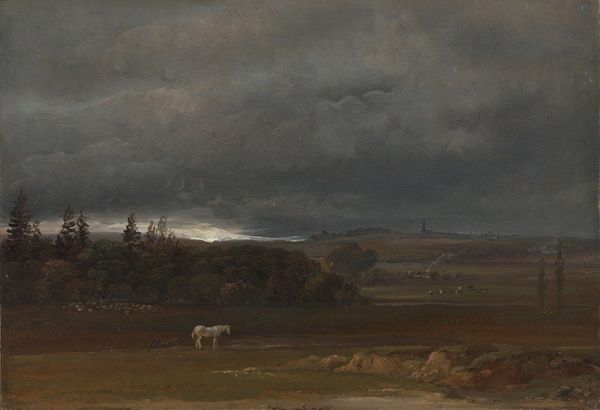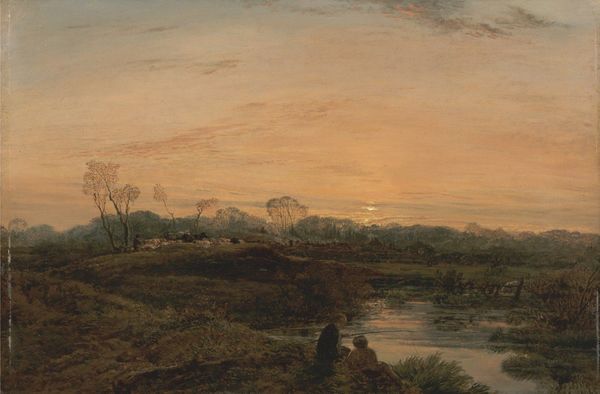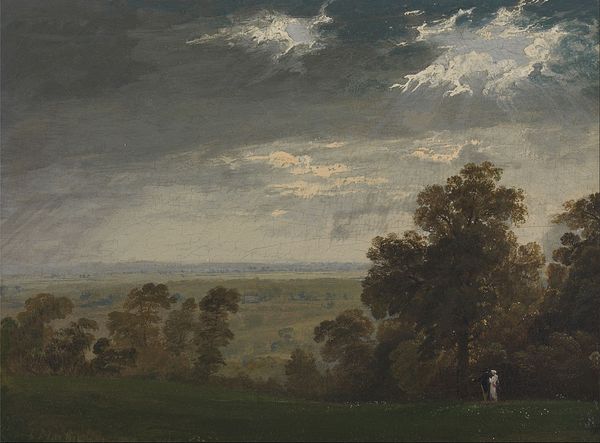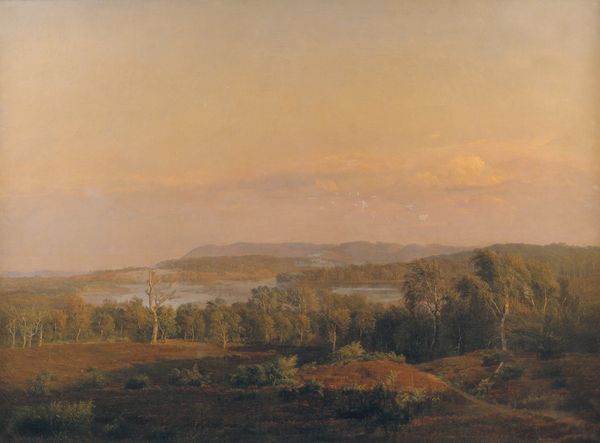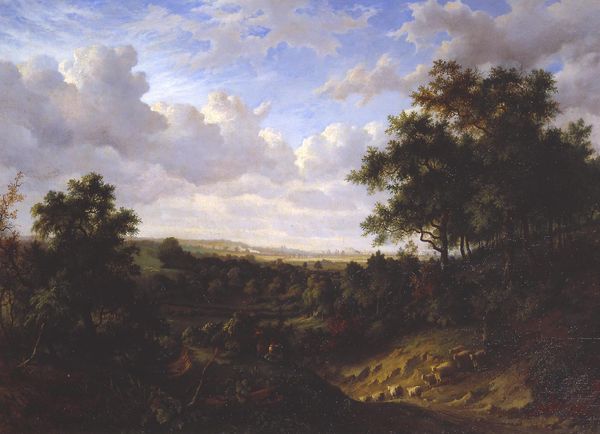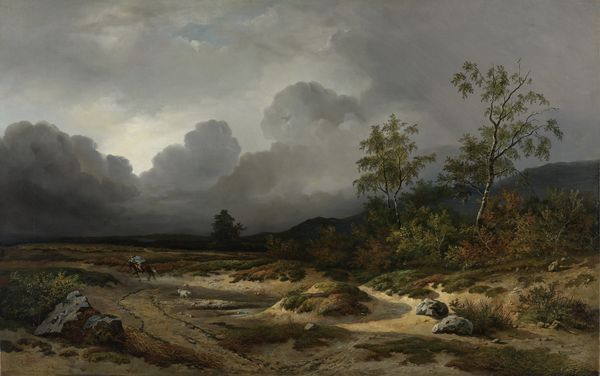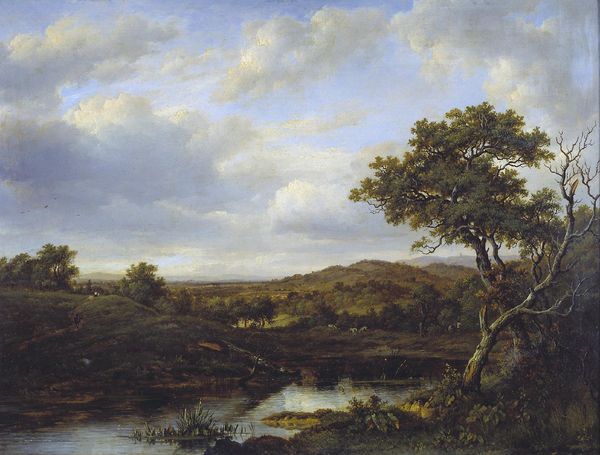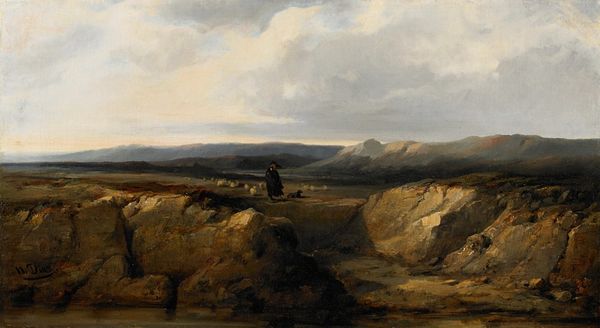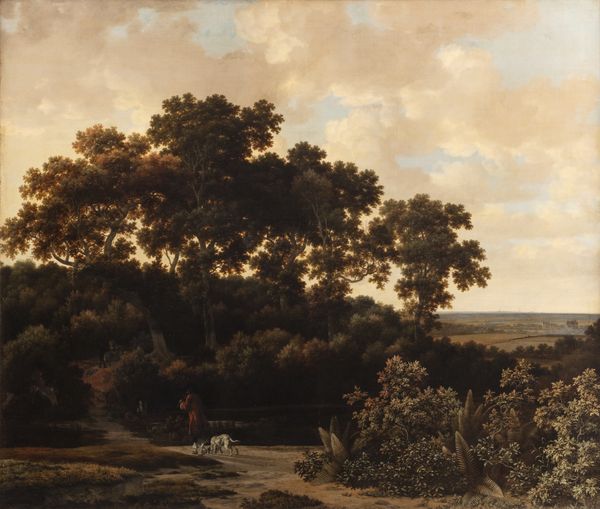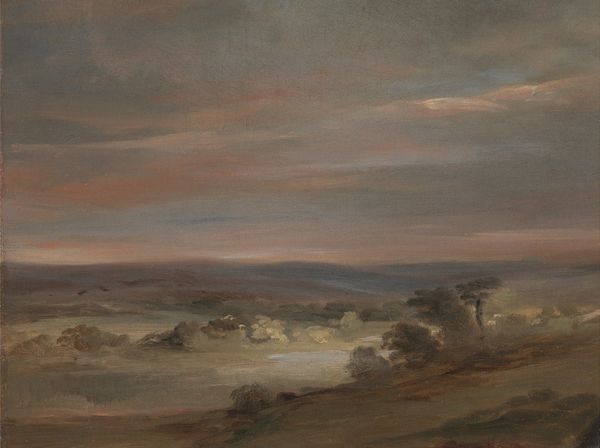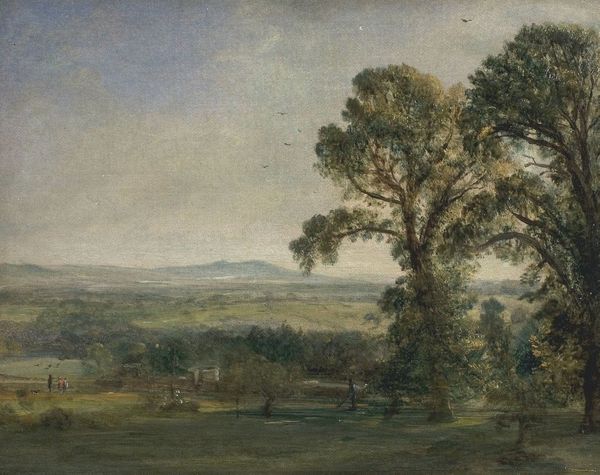
painting, plein-air, oil-paint
#
painting
#
plein-air
#
oil-paint
#
landscape
#
nature
#
romanticism
#
fog
#
nature
#
realism
#
mist
Dimensions: 49 cm (height) x 66 cm (width) (Netto), 56.2 cm (height) x 73.6 cm (width) x 7.5 cm (depth) (Brutto)
Curator: This is Dankvart Dreyer’s "A View of a Wooded Landscape in Jutland," painted between 1840 and 1841. Dreyer, a Danish artist, captures the atmospheric essence of Jutland's countryside using oil on canvas, focusing particularly on plein-air techniques. Editor: It's captivating! Somber almost. The low-hanging clouds and that little lonely cottage create a sense of… longing? Or is it isolation? And what is it about the trees—bending in some unseen wind—that pulls my attention? Curator: You're tapping into the core of 19th-century Romanticism, a real vibe at that time. Artists were turning to nature, away from industrialization and urban sprawls, looking to capture what they considered sublime experiences. And Dreyer, through his plein-air approach, is trying to get at an authentic and "realistic" rendering of the Jutland landscape. The mist, the textures of the vegetation… they’re quite detailed when you zoom in. Editor: Realism within Romanticism? That's a curious combo, isn't it? This image presents a very controlled sense of wilderness, where you can see people treading upon a path on the hills! You almost expect someone to come strolling out from that cottage, framed by all that melancholic beauty. I can’t help but wonder how accessible this vision of Jutland was for those outside a certain class, because it also evokes a sense of property ownership that’s not lost on me. Who gets to own "nature," eh? Curator: I agree, there's a dialogue between humans and nature. You have a point on that duality. Looking at how the light plays on the edges of the clouds, I wonder, beyond the socio-economic questions of the day, what drew Dreyer himself out here? It feels so intimate, as if he knew every blade of grass. Editor: Perhaps a way of coping with social structures or of seeking comfort from systems of domination. Maybe this view of nature felt like an escape, and I mean that in both senses of the word. For Dreyer and maybe, for some observers, it provided some refuge from social injustice while offering up some more complex representations on power that speak to the politics of representation. Curator: That interpretation lends another layer to what could otherwise just be seen as a simple landscape painting. He definitely captured a spirit in this landscape. A tangible mood and, perhaps, a quiet rebellion of sorts. Editor: Exactly. Art like this is never *just* a landscape, especially when seen through today's lens, no? We have to wonder who gets to experience this particular landscape as a place of leisure and contemplation, versus those who might simply survive there, as well as what these portrayals could mean against contemporary cultural politics and how those views might affect our relationships with this natural scenery today.
Comments
No comments
Be the first to comment and join the conversation on the ultimate creative platform.
